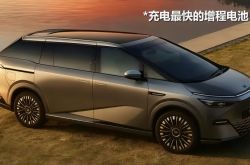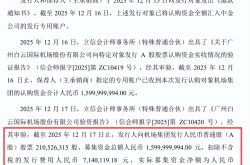Apple down, Huawei up!
![]() 09/14 2024
09/14 2024
![]() 560
560
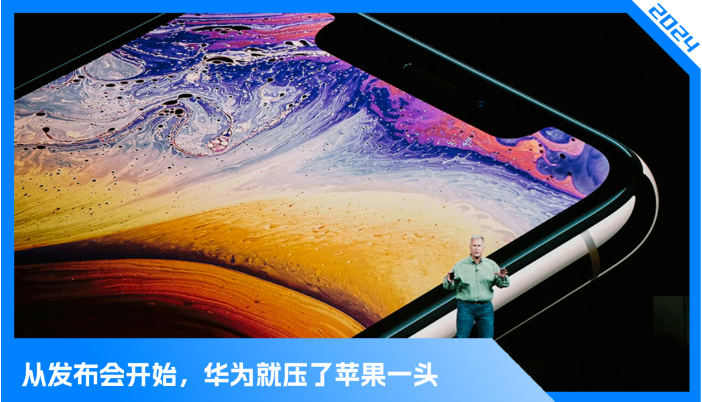
Editor | Ji Ran
The two hottest events in the tech world recently are undoubtedly Apple and Huawei's product launches.
Huawei and Apple have always been compared, and when the two companies' product launches happen on the same day, the competition reaches its peak. On September 10, both Apple and Huawei held their respective product launches on the same day, unveiling their most anticipated new models of the year. Even from the themes of their launches, one can sense the intense rivalry: Apple's was "Moment of Truth," while Huawei's was "Extraordinary Moments, Always Highlighted." The new products launched by the two companies have become hot topics of discussion among netizens. Apple unveiled the iPhone 16, Apple Watch, AirPods, and more, with the iPhone 16 series being hailed as "Apple's first AI phone."
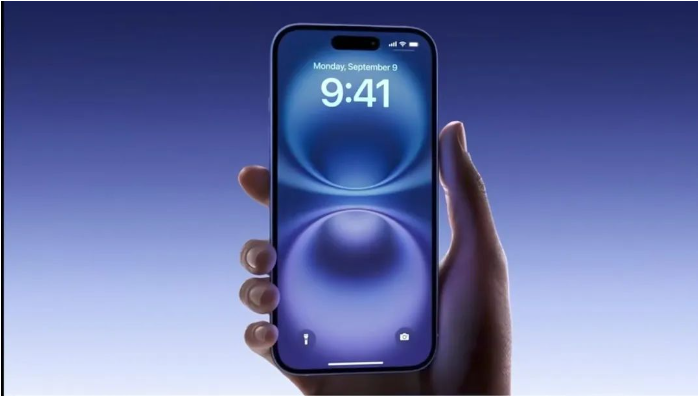
Huawei, on the other hand, launched the Mate XT, the Askey M9 five-seater version, and the Zhide R7, among others. In particular, the Mate XT, as the industry's first mass-produced tri-fold phone, has garnered significant attention with its 10.2-inch screen in its tri-fold state, equivalent to a small tablet. Interestingly, Apple's product launch, which is usually seen as the "Spring Festival Gala of the tech world," did not elicit much applause this time but instead received a barrage of criticism. Huawei, on the other hand, clearly fared better, sparking wider and more positive discussions. Before the launch, over 3 million people had pre-ordered the Mate XT on Huawei's official store. So, what gives Huawei the edge over Apple?
01
iPhone 16, "Moment of Truth" Ends at the Launch Event
For this Apple launch event, many users' feedback was that it was bland, lacking innovation, and more disappointing than expected. Almost every selling point failed to bring a refreshing breakthrough, amounting to incremental upgrades. In June this year, Apple introduced Apple Intelligence. As Apple's first phone specifically designed for Apple Intelligence, the iPhone 16 series was undoubtedly the star of the show, with Apple dedicating nearly an hour to its introduction—but still continuing the trend of incremental updates. Specifically, the new iPhone 16 comes in four models: the standard version, Plus, Pro, and Pro Max, priced starting at 5,999, 6,999, 7,999, and 9,999 yuan, respectively. In terms of design, the iPhone 16 series continues Apple's recent rectangular border design, similar to the iPhone 15 series, though the screen sizes of the 16 Pro and 16 Pro Max have slightly increased, with borders narrowed by about a third, a change that may not be immediately noticeable to users. Instead, color has become a major criticism of the iPhone 16. After the launch, the hashtag "ugly Apple color scheme" trended on social media, with some users comparing the iPhone 16's colors to those of autumn clothing, calling them "cheap-looking," "too saturated," and "like a garbage bag."
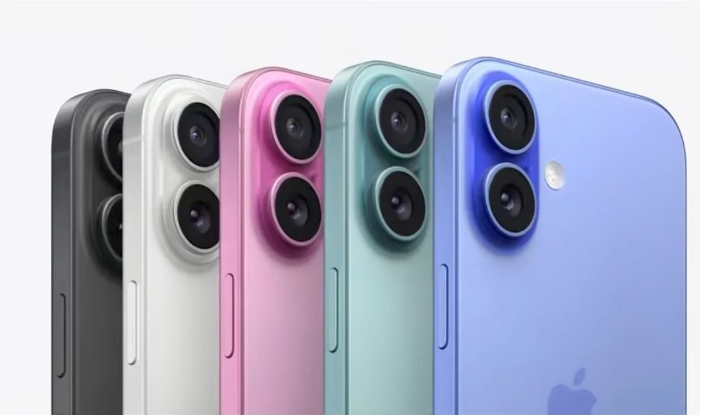
The iPhone 16's camera has received some upgrades, with the main camera now boasting 48 megapixels and support for 4K 120fps video recording. Night mode, depth shooting, and portrait mode have also been optimized, resulting in better performance in low-light conditions. However, compared to the iPhone 15, the shooting experience on the iPhone 16 has not undergone a qualitative leap. Even more awkwardly, when compared to domestic brands like Huawei, Xiaomi, and OV, Apple's camera does not stand out. In recent years, domestic phone brands have made more noticeable breakthroughs in imaging technologies such as photography algorithms and AI photography.
The above are relatively routine upgrades, with the phone's AI capabilities being the focus of this Apple launch event. During the event, Apple CEO Tim Cook stated that the new iPhone was designed from the ground up for Apple Intelligence, and that the A18 chip in the iPhone 16 series is "specifically designed for Apple Intelligence," offering over twice the AI processing power compared to the A16 chip in the iPhone 15. Since most users have no direct experience with concepts like intelligence and processing power, Apple showcased various AI applications on the iPhone 16.
For example, users can use AI to proofread and refine articles, generate emojis based on language descriptions, find corresponding photos and videos in the gallery using language descriptions, and generate email summaries with AI in the Mail app. These functions are actually achievable on many AI hardware and software platforms, but Apple's advantage lies in having the iPhone as its trump card. The newly added camera control button on the iPhone 16 enables AI features such as Visual Intelligence, which Apple highlighted during the event.
For instance, when you see a restaurant, you can use the iPhone 16's camera control button to take a photo of its facade, and the phone will automatically pull up the restaurant's business hours, reviews, and other information, even allowing you to make a reservation. You can also identify a bicycle, and the phone will provide its price and purchase options. While Apple positions the AI capabilities of the iPhone 16 as its main attraction, it may have forgotten that since the advent of ChatGPT, the global AI boom has already begun, and many users have already experienced various AI functionalities. The so-called innovative Visual Intelligence of the iPhone 16 can actually be experienced on other AI language models.
Overall, Apple has not led the way in AI phones as it once did with smartphones.
Instead of blazing new trails, Apple has stuck to its existing product philosophy, offering simple optimizations without achieving the breakthroughs that fans had hoped for. As such, this launch event felt more like a routine product iteration, hardly deserving of the "Moment of Truth" theme. Nabila Popal, Senior Director of IDC's Global Data and Analytics Team, stated that while Apple's new smartphones introduced this year have many highlights, they are unlikely to drive significant growth and are more about stemming Apple's decline.
Once the undisputed leader in tech, Apple now resembles more of a "follower." In the wave of the AI era, Apple lags behind its peers in the tech world, such as OpenAI and Microsoft. While Apple seems eager to prove itself in the AI era, it has yet to demonstrate genuine innovation. This has fueled nostalgia for the genuine "Moment of Truth" moments when Steve Jobs unveiled the iPhone, iPod, and MacBook.
02
Huawei's Tri-Fold Screen: A Breakthrough for Chinese Phone Makers
A few hours after Apple's launch event, Huawei held its own event, bringing the biggest surprise: the unveiling of the tri-fold Mate XT, with its screen as its main selling point. The Mate XT offers single-fold, dual-fold, and tri-fold modes. In its tri-fold state, the screen measures 10.2 inches, and the device weighs 306 grams with the screen surface layer included. Some netizens have joked that using the tri-fold screen feels like an emperor perusing official documents.

The day before the launch, on September 9, Huawei's official store showed that over 3 million people had pre-ordered the Mate XT. According to Tianyancha's intellectual property information, Huawei Technologies Co., Ltd. applied for two patents related to "foldable electronic devices and housing devices" in March 2022. The utility model patent was granted in November 2022, while the invention patent was published in September 2023.
Currently, opinions on the Mate XT are polarized among netizens: some appreciate its ultra-thin design for a new experience, while others question its durability, fearing creases and cracks due to the additional screen and hinge. Indeed, with an extra screen and hinge, the tri-fold design is more prone to creases and quality issues, necessitating improved screen and hinge processing technologies. At the launch event, Yu Chengdong introduced that Huawei had spent five years overcoming technical challenges in screens and hinges, pioneering the Huawei Tiangong hinge system to achieve dual-rail linkage and enable both internal and external bending. Another breakthrough of the Mate XT lies in its mass production.
Previously, domestic phone brands like Honor and OPPO, as well as foreign brands like Samsung, had showcased tri-fold concept phones but had not mass-produced them. The Mate XT, as the world's first mass-produced tri-fold phone, has turned this concept into reality. Nevertheless, the Mate XT is not without its flaws.
Firstly, it has been widely criticized for its high price, starting at 19,999 yuan. On second-hand platforms, the price of the Mate XT has soared to tens of thousands of yuan, while the iPhone 16 series usually commands a premium of no more than 2,000 yuan. Some find the Mate XT's price exorbitant. In reality, the Mate XT is an "electronic luxury" aimed at entrepreneurs and small business owners, rather than average workers.
Secondly, the Mate XT may face yield rate challenges after mass production. According to relevant research reports from Shanxi Securities, the median yield rate for hinges in the industry is around 50% to 60%, posing a significant hurdle in the assembly of foldable screens. The use of dual hinges in tri-fold phones further complicates the process. While Huawei claims to have overcome technical hurdles with the Mate XT, it must still face real-world feedback from users after delivery. If quality issues lead to a collapse in reputation, even mass production would be considered a failure.
Lastly, it remains to be seen how much momentum the Mate XT can give Huawei in the mobile phone market. Although the Mate XT has generated significant buzz, foldable phones still account for a small proportion of the overall market. According to Trend Force, global shipments of foldable phones reached 15.9 million units in 2023, accounting for only 1.4% of the overall smartphone market. Shipments are expected to grow to 17.7 million units in 2024, but their market share will still only increase to 1.5%. Time will tell how much impact the Mate XT will have on Huawei's position in the mobile phone market.
03
Apple Down, Huawei Up
Judging from the head-to-head competition at the launch events, Huawei clearly stole the show from Apple. Overall, Apple and Huawei have been trending in opposite directions in recent years, with Apple declining and Huawei rising. According to IDC data, Huawei regained the top spot in China's smartphone market with a 17.5% market share in the first half of 2024, with shipments growing by 110% and 50.2% in the first and second quarters, respectively, outpacing the industry. In the premium segment, Huawei is also gaining momentum.
Canalys data shows that in the Chinese mainland's over-US$600 phone market, Apple retained the top spot with a 54% market share in the first quarter of this year, but sales declined by 25% year-on-year. In contrast, Huawei's sales grew by 67% year-on-year, boosting its market share to 26%. In the second quarter, Apple's market share further declined to 52%, while Huawei's rose to 30%. Beyond the hardware market, Huawei is also gaining ground on Apple in the software market for operating systems.
According to Counterpoint data, HarmonyOS continued its strong growth in the first quarter of 2024, successfully exceeding a 4% global market share. In China, thanks to the popularity of Huawei's flagship products, HarmonyOS surpassed iOS for the first time to become the second-largest operating system in the market. On the other hand, Apple has entered a troubled period, with declining iPhone 15 sales, market share erosion, stock sales by Warren Buffett, and a lack of popularity in the AI era.
Why has Apple started to lag behind, especially in the AI era? Relying on past successes and neglecting the present is a crucial factor. Last year, Bloomberg quoted Tim Cook as saying, "Apple has been working on generative AI technology for years. But I can tell you unequivocally that Apple executives were caught off guard by the sudden AI boom in the industry and have been scrambling to make up for lost time since the end of last year." After enduring heavy pressure from the United States, Huawei persevered through dark times and successfully withstood the pressure test. It is now regaining its vitality and demonstrating robust momentum. This brings a business insight: the pendulum swings, and no company can maintain a perpetual advantage. Only by maintaining a constant sense of crisis can one stay ahead of the pack.

